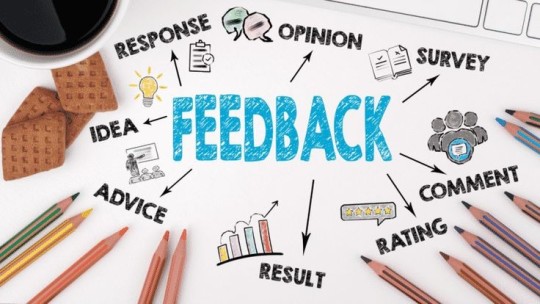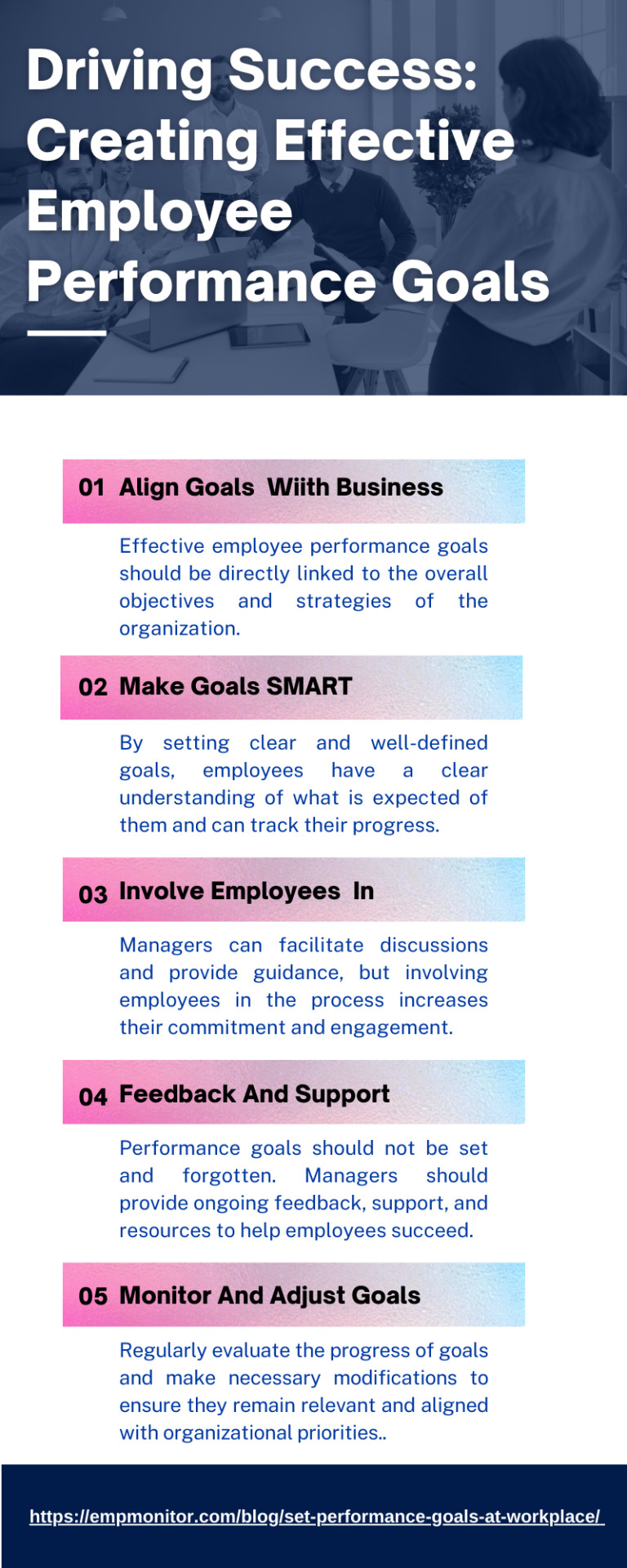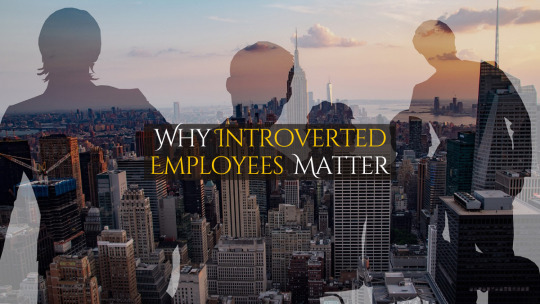#employee performance
Text
Optimizing Employee Performance: The Ultimate Management System I Ciel HR
Unlock the potential of your workforce with our comprehensive guide to optimizing employee performance. Elevate productivity, engagement, and results. Read More!
https://www.cielhr.com/get-employees-to-own-their-own-performance/
2 notes
·
View notes
Text
The Power of Feedback
Feedback has always been an integral part of human interaction and development. Whether it’s for a personal relationship, or professional settings. Feedback always plays a vital role in shaping our understanding and refining our skills. It’s like a secret ingredient that makes you awesome and motivates you to do much better and improve yourself and helps you to grow and succeed in simple and…

View On WordPress
#Communication#Constructive Criticism#Continuous Improvement#Employee Performance#Feedback#Feedback Culture#Feedback Loop#Growth Mindset#Leadership Skills#Learning and Growth#Personal Development#Positive Reinforcement#Productivity Tips#Professional Development#Self-awareness
2 notes
·
View notes
Text

Maximizing Productivity: Key HR Metrics Every Organization Should Measure
In the constantly evolving business landscape, Human Resources (HR) departments play a pivotal role in shaping an organization's workforce and culture. The ability to measure and analyze HR metrics is crucial in making informed decisions that drive business success. By tracking these metrics, HR professionals can gain insights into employee performance, engagement, and overall company health. This blog post outlines 12 key HR metrics that organizations should measure to ensure they are on the path to achieving their strategic objectives.
To know more- https://realcoderz-us.blogspot.com/2024/04/maximizing-productivity-key-hr-metrics.html
0 notes
Text
How to Discuss Poor Performance with an Employee
Introduction:
Addressing poor performance can be a challenging task for any manager or supervisor. However, open and constructive communication is essential to foster improvement and maintain a healthy work environment. In this blog, we will delve into effective strategies for discussing poor performance with an employee, offering guidance on how to approach the conversation, communicate expectations, and foster a positive outcome.
1. Understand the Root Cause:
Before initiating the conversation, take time to analyze the reasons behind the underperformance. Is it a lack of skills, motivation, or unclear expectations? Identifying the root cause will help tailor your approach and provide specific feedback.
2. Choose the Right Time and Place:
Select an appropriate time and private space on how to discuss poor performance with an employee. Avoid addressing the issue in a rushed or public setting to ensure the employee feels comfortable and supported.
3. Be Specific and Objective:
During the conversation, focus on specific examples of underperformance rather than generalizations. Use objective language and refer to measurable outcomes or behaviors to provide clarity on expectations.
4. Use the SBI Model (Situation-Behavior-Impact):
The Situation-Behavior-Impact model helps structure feedback. Start by describing the situation, detailing the observed behavior, and explaining the impact it had on the team or project. This can be an effective solution on how to discuss poor performance with an employee.
5. Encourage Two-Way Communication:
Create an open dialogue by encouraging the employee to share their perspective. Actively listen to their concerns, challenges, or reasons behind the underperformance. This fosters a collaborative approach to finding solutions.
6. Set Clear Expectations:
Clearly communicate expectations for improvement. Establish measurable goals and a timeline for assessment. Ensure the employee understands the consequences if performance does not improve.
7. Offer Support and Resources:
Identify areas where the employee may need additional support, whether it be through training, mentorship, or resources can be done through new ways on how to talk to underperforming employee. This demonstrates a commitment to their success and can motivate them to overcome challenges.
8. Discuss a Performance Improvement Plan (PIP):
If necessary, consider implementing a Performance Improvement Plan (PIP). A PIP outlines specific actions, goals, and timelines for improvement. It provides a structured framework for tracking progress.
FAQs:
Q1: How can I approach the conversation without demoralizing the employee?
A1: Focus on constructive feedback, highlighting areas for improvement rather than criticizing the individual. Emphasize your belief in their potential and willingness to support their growth. An effective approach on how to discuss poor performance with an employee starts with self-evaluating rather than blaming the employees.
Q2: What if the employee becomes defensive during the conversation?
A2: Acknowledge their feelings and reiterate that the goal is improvement, not punishment. Stay calm, stick to facts, and guide the conversation back to specific behaviors and outcomes.
Q3: How often should I check in on their progress after the initial discussion?
A3: The frequency of check-ins depends on the severity of how to talk to underperforming employee. Establish a schedule that allows for regular updates, feedback, and adjustments to the performance improvement plan.
Conclusion:
Effectively discussing poor performance is crucial for fostering a culture of continuous improvement within a team. By approaching the conversation with empathy, clear communication, and a focus on collaboration, managers can help employees overcome challenges and contribute to the overall success of the organization.
1 note
·
View note
Text
AI is Poised to Jumpstart Employee Performance. Here’s How.

“OpenAI is nothing without its people”. So tweeted Mira Murati, the then-interim CEO of OpenAI, the leader in AI innovation, over the weekend of November 18th. The tweet was repeated by other employees hundreds of times over a few hours. And so it became obvious, even for the world’s foremost AI company,
Also Read: HRTech Interview with Kathy Wallen, VP of People at Code42
that employees are every organization’s biggest asset. Individuals’ unique backgrounds, experiences, and expertise contribute to their undeniable value. They bring feelings, passions, and a peripheral vision – helping businesses connect the dots to achievement. The introduction of new technology, like artificial intelligence, doesn’t change that.
In fact, today’s employees believe these new tools will only strengthen their unique contributions – with 70% of Gen Z and 56% of Gen X employees saying they would leave their current job if it meant they’d have access to better technology. In response, 81% of HR leaders note they’ve already explored or implemented artificial intelligence within their organizations. The result? Greater communication skills, greater productivity, better teamwork, better results.
New technology can be disruptive without being destructive. And the new world order of work calls for new solutions.
Modern Challenges: AI in the era of hybrid work
It’s no secret that office environments have drastically changed in recent years. The expansion of hybrid and remote environments flipped work on its head – separating people geographically and introducing communication, collaboration, and mentorship only via a computer screen.
To know More This Article: https://hrtechcube.com/enhancing-employee-performance/
Explore HRtech News for the latest Tech Trends in Human Resources Technology.
0 notes
Text
Discover the advantages of automating employee performance management. Enhance productivity, boost morale, and drive success with streamlined performance processes.
#employee performance#performance management automation#human resources#automation#HR automation#HR Process#HR process automation
0 notes
Text
https://hrtechcube.com/hrs-guide-to-ethical-termination-procedures/
Terminating an employee is a challenging and sensitive task that Human Resources (HR) professionals occasionally face. It is crucial to handle the termination process with the utmost care, adhering to ethical standards and legal requirements.
0 notes
Text

If you want to drive business success, create effective employee performance goals.
0 notes
Text
Every company needs a dedicated manager to administer their HR software due to several important reasons. HR software, also known as human resources management systems (HRMS) or human resources information systems (HRIS), plays a crucial role in managing various aspects of an organization's workforce, from recruitment and employee onboarding to performance management and payroll processing. Having a dedicated manager responsible for administering this software ensures its effective implementation, maintenance, and utilization within the company. A dedicated HR software manager brings expertise, organization, and efficiency to the administration of HR software within a company. Their role encompasses system optimization, data management, user support and training, integration and upgrades, compliance management, and vendor relationship management. Having a skilled professional in charge of HR software administration ensures that the system functions effectively, supports HR processes, and contributes to the overall success of the organization.
#transform your workplace#employee satisfaction#employee performance#employee relations#human resources#employee management#employee happiness#human resource management#lanteria hr#hr software#company culture#work environment#workplace culture#employee wellbeing#workplace communication#workplace environment#work environment workplace culture#psychological safety at work#servant leadership#best hr software#hr system
0 notes
Text

Unveiling The Advantages Of Implementing Performance Management Systems In Your Business
In this article, we will delve into the powerful benefits of integrating performance management systems into your business operations. By prioritizing clear goals, establishing transparent communication, and fostering a culture of continuous improvement, these systems can elevate your team's productivity and drive success. We will explore how implementing performance management systems can streamline performance evaluations, boost employee engagement, and ultimately optimize your business efficiency. Stay tuned as we unveil the key advantages of embracing this transformative approach to managing your workforce. Now, let's unlock the potential of your business with the strategic implementation of performance management systems.
- Introduction
Embark on a transformative journey for your business by unlocking the hidden potential within your workforce with the implementation of performance management systems. In today's fast-paced and competitive business landscape, organizations are constantly seeking ways to enhance efficiency and productivity. This article delves into the myriad benefits of integrating performance management systems into your business operations, offering insights into how this strategic approach can drive growth and success.
Discover how harnessing the power of performance management systems can revolutionize the way you manage and develop your employees, leading to increased engagement, improved performance, and ultimately, greater organizational success. Stay tuned to uncover practical strategies and valuable tips that will empower you to unleash the full potential of your team and propel your business toward unparalleled heights of achievement
To know more- https://realcoderz-us.blogspot.com/2024/03/unveiling-advantages-of-implementing.html
#Performance Management Systems#employee performance#employee engagement software#performance management software
0 notes
Text
Maximizing Potential: The Benefits of Performance Monitoring

Monitoring is a critical aspect of any organization's success. It involves tracking, measuring, and analyzing various key performance indicators (KPIs) to assess the performance of individuals, teams, projects, or the entire organization. With the growing complexity and competitiveness of today's business environment, monitoring performance has become a strategic tool that can help organizations maximize their potential and achieve their goals. This article will explore the benefits of performance monitoring and how it can drive success across various domains.
Enhanced Performance and Productivity: Performance measuring provides organizations with real-time insights into how individuals and teams perform. By tracking and measuring performance metrics, organizations can identify areas where performance can be optimized, and take proactive measures to address any performance gaps. It helps in enhancing productivity, as employees are held accountable for their performance and are motivated to consistently perform at their best.
Goal Alignment and Focus: Performance tracking allows organizations to align individual and team performance with overall organizational goals. By setting measurable performance targets and monitoring progress towards those targets, organizations can ensure that all efforts are directed toward achieving the strategic objectives of the organization. It creates a sense of purpose and focuses among employees, resulting in improved goal alignment and increased organizational performance.
Data-Driven Decision-Making: Monitoring performance provides organizations with data-driven insights that can inform decision-making processes. By analyzing performance data, organizations can identify trends, patterns, and areas of improvement. It enables data-driven decision-making, where decisions are based on facts and data, rather than subjective opinions or assumptions. Data-driven decision-making helps organizations make informed and strategic decisions, resulting in better outcomes and improved performance.
Early Detection of Issues and Risks: Performance measuring enables organizations to detect issues and risks early on before they escalate into major problems. By regularly monitoring performance metrics, organizations can identify performance gaps, bottlenecks, or areas of underperformance, and take corrective actions promptly. It helps in mitigating risks, avoiding potential losses, and maintaining smooth operations.

Employee Development and Engagement: You can use employee monitoring as a tool for employee development and engagement. By providing regular feedback and coaching based on performance data, organizations can help employees improve their skills and capabilities. It fosters a culture of continuous learning and development and enhances employee engagement by demonstrating that the organization values and invests in its growth. Engaged employees are more likely to be motivated, productive, and committed to achieving organizational goals.
Accountability and Transparency: Monitoring promotes a culture of accountability and transparency within organizations. When performance metrics are clearly defined, tracked, and communicated, employees understand what is expected of them and how performance will be evaluated. It creates a transparent and fair performance evaluation process, where employees are held accountable for their performance, and rewards and recognition are based on merit. It fosters a culture of performance excellence and promotes a sense of fairness and trust among employees.
Continuous Improvement: Monitoring of performance is not a one-time event, but an ongoing process of continuous improvement. By regularly monitoring performance metrics, organizations can identify areas for improvement, implement changes, and measure the impact of those changes. It promotes a culture of continuous improvement, where organizations are constantly striving to enhance their performance and achieve higher levels of excellence.
Competitive Advantage: Performance measuring can provide organizations with a competitive advantage by enabling them to stay ahead of the competition. By monitoring performance metrics, organizations can identify areas where they are outperforming competitors, as well as areas where they may be falling behind. It allows organizations to take timely actions to capitalize on their strengths and address their weaknesses, thereby gaining a competitive edge in the market.

Resource Optimization: Monitoring helps organizations optimize their resources, including time, effort, and budget. By employee engagement and retention with tracking and analyzing performance metrics, organizations can identify areas where resources are being underutilized or misallocated, and make necessary adjustments. It ensures that resources are allocated effectively to areas that drive the most significant impact on performance, leading to efficient resource management and cost savings.
Also Watch: EmpMonitor|Leading Employee Engagement and Workforce Productivity Tool
youtube
Conclusion
Performance control is a powerful tool that can help organizations maximize their potential and achieve their goals. From enhancing performance and productivity, aligning goals and focus, enabling data-driven decision-making, detecting issues and risks early, fostering employee development and engagement, and promoting accountability and transparency, to driving a culture of continuous improvement - the benefits of monitoring performance are manifold. Organizations that prioritize performance monitoring as part of their strategic initiatives are better positioned to achieve sustainable success in today's competitive business landscape.
#Employee#Employee performance#Performance Monitoring#Employee retention#Employee Engagement#Youtube
0 notes
Text
The Value of Introverted Employees: Why Quiet Workers Matter
In today’s fast-paced work environment, extroverted personalities tend to be favoured over introverted ones. The outgoing, sociable, and assertive types are often seen as go-getters and high performers, while the quiet, thoughtful, and reserved individuals are sometimes overlooked or undervalued. However, research shows that introverted workers have unique strengths that can bring enormous value…

View On WordPress
#employee development#employee engagement#employee performance#employee recognition#employee retention#employee satisfaction#employee value#employees#grow business#introverted employees#leadership#leadership skill#quiet workers#talent management#work environment#workplace productivity#written communication
0 notes
Text

0 notes